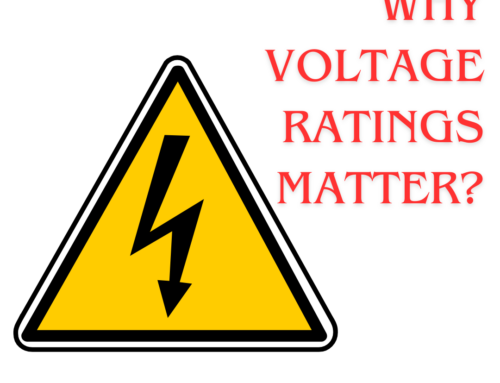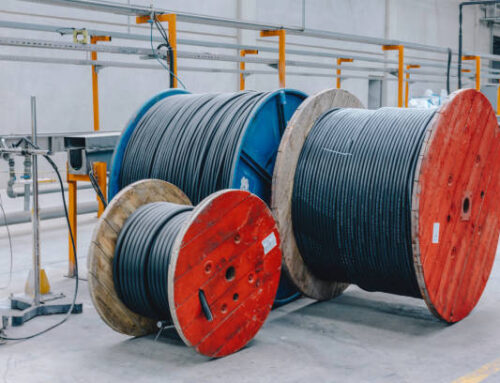The Two Types of Electrical Cables – Stranded and Solid
When it comes to electrical wiring, understanding the differences between the two main types of cables – stranded and solid – is crucial for selecting the right option for your specific needs. Both stranded and solid cables serve different purposes based on their structure and performance in various environments.
Solid cables consist of a single, continuous metal core, while stranded cables are composed of multiple smaller wires twisted together. This blog will explore the characteristics, advantages and disadvantages of solid vs. stranded cables, applications of each cable type, and flexibility of solid vs. stranded cables providing a clear guide on how to make the right choice depending on the situation.
Mahendra Fact File: Did you know that the choice between solid and stranded cables significantly impacts long-term electrical installations? Stranded cables are preferred in environments with frequent movement and vibration, while solid cables are the go-to choice for stable, fixed installations.
What is a Stranded Cable?
Stranded cables are made up of multiple small strands of wire twisted together to form a single flexible conductor. As the name suggests, its appearance is similar to a strand of hair. This design allows the cable to bend and flex more easily than a solid cable, making it ideal for dynamic environments where the wiring needs to move or be repositioned frequently. Stranded cables are commonly used in applications like automotive wiring, robotics, and portable devices due to their flexibility and resilience in high-vibration settings.
Advantages of Stranded Cables
Flexibility: the primary benefit of stranded cables is their flexibility, making them suitable for machinery, or any application that requires constant movement.
Vibration Resistance: Stranded cables perform well in environments prone to vibrations, such as vehicles and industrial machines.
Easy installation: Flexibility of stranded cables allow them to be easily routed through conduits and around corners, making them ideal for installations in tight or complex spaces.
Disadvantages of Stranded Cables
Cost: stranded cables tend to be more expensive due to the complexity of manufacturing them with multiple wire strands.
Higher resistance: Stranded cables have a high electrical resistance, which can lead to power losses over long distances.
Corrosion risk: Due to increased surface area, stranded cables are more susceptible to corrosion, particularly in extreme environments.
What is a Solid Cable?
Solid cables consist of a single, unbroken strand of metal, usually copper or aluminium. These cables are known for their durability and are commonly used in permanent, stable installations like residential and commercial wiring. Solid cables are less likely to break and offer better electrical conductivity over long distances because they don’t require much flexibility.
Advantages of Solid Cables
Low resistance: Solid cables have lower electrical resistance, making them ideal for long-distance power transmission where minimising energy loss is important.
Durability: Solid wires are sturdier in fixed installations and hold up better over time in residential, commercial, or industrial wiring.
Cost-effective: Solid cables are generally cheaper to produce, making them a cost-effective solution for fixed installations.
Disadvantages of Solid Cables
Lack of flexibility: Solid cables are stiff and not suited for environments where they need to be bent or moved frequently, leading to breakage over time.
Potential for breakage: Repeated bending or twisting of solid cables can cause them to crack or break, making them less durable.
Challenging installation: Due to their rigidity, solid cables can be harder to install in tight, enclosed spaces.
Stranded Wire vs. Solid Wire: Know the Difference
When deciding between stranded and solid cables, it’s crucial to understand the advantages and disadvantages of solid vs. stranded cables. Factors such as flexibility, cost, current-carrying capacity, and the specific installation requirements should be considered. When to use solid vs. stranded electrical cables largely depends on the intended application. Stranded cables are ideal for applications that involve frequent movement, like in automotive systems or portable devices. On the other hand, solid cables are better suited for stationary installations where low resistance and long-term durability are key, such as building wiring.
Conclusion
To summarise, stranded cables offer flexibility and are great for dynamic environments, while solid cables provide durability and low resistance, making them ideal for stable, long-term installations. With the cable market expanding like never before, understanding the applications of solid and stranded electrical cables and considering factors like flexibility will help you make the right choice. WIth Mahendra Electricals, you can choose the best cable type for home, commercial or industrial use. Make sure you browse through our catalog of Polycab Cables and Apar Cable Solutions to find exactly what you need for your next project.
FAQs
- Which cable type is more flexible: stranded or solid?
Stranded cables are more flexible due to their multiple twisted wires, ideal for applications with frequent movement.
- Can both stranded and solid cables be used in the same application?
Yes, they can be, depending on the application. However, stranded is best for high vibration based environments, while solid is suited for stable, fixed installations.
- What factors should be considered when selecting cable type for an application?
Consider flexibility, durability, current capacity, installation environment, and cost.





